Custom Kites: A Complete Guide for Enthusiasts
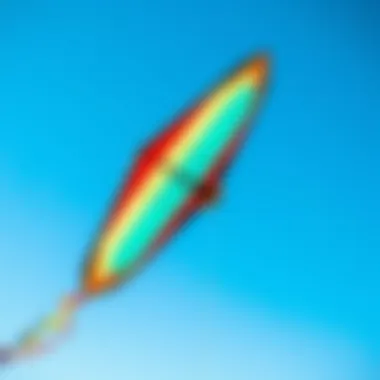
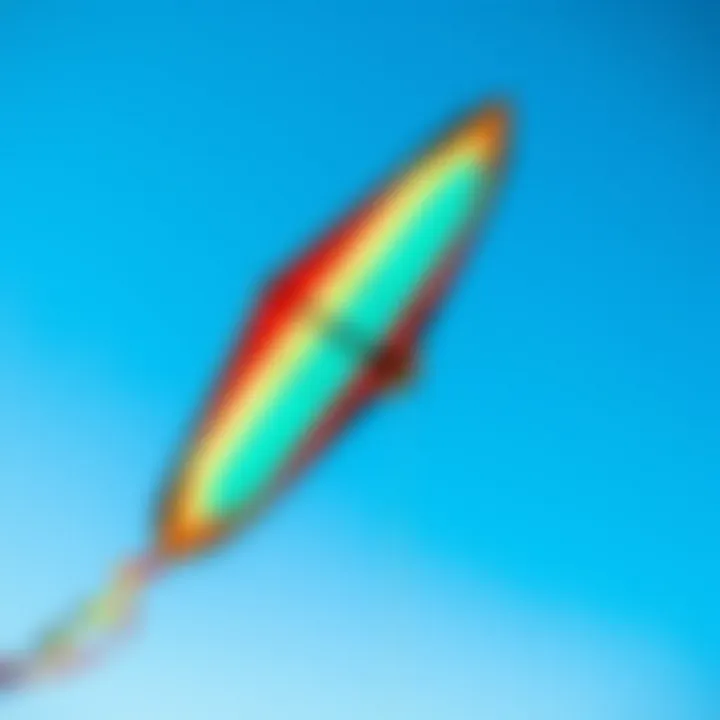
Intro
In the vibrant universe of kiteboarding, custom kites have emerged as not simply a fancy option but as crucial tools that can greatly enhance the overall experience on the water. While mass-produced kites serve their purpose, nothing compares to the personal touch that comes from a customized design. This guide aims to unearth the intricacies of what makes a kite not just functional, but tailored to the user’s needs.
Many kiteboarders face the daunting task of sifting through countless designs and specifications. Deciding on which kite fits your riding style, skill level, and preferences can feel like walking through a maze. There’s more to kiteboarding than meets the eye, and understanding the finer details of custom kites can make or break your session on the water. As we journey through this guide, we’ll touch upon key considerations that go beyond aesthetics and dive into performance and practicality.
By comprehending the various elements that influence kite design, enthusiasts will not only elevate their riding abilities but also enrich their connection to the sport. As we embark on this exploration, prepare to discover just what it means to own a kite that reflects both your style and your individual needs.
Let’s kick things off with a closer look at the equipment insights that will set the foundation for our deep dive into custom kites.
Equipment Insights
In the realm of kiteboarding, understanding the gear you use is paramount. Each piece of equipment has its role, and knowing how they interact can significantly influence performance and safety. Let's explore the latest gear trends and maintain your kite effectively.
Latest Gear Reviews
The market for kites is continually evolving, and keeping up with the current trends is essential for any serious kiteboarder. When we talk about the latest custom kites, brands like Naish and F-One typically spring to mind. However, unique offerings from up-and-coming companies are worth your attention too.
- Naish Custom Series: The latest models are lighter than ever, providing enhanced responsiveness and control.
- North Kiteboarding: Known for their durable materials, they offer customized options that promise longevity.
These features not only enhance performance, but also ensure that riders can find kites tailored to their specific styles, whether that’s wave riding or freestyle tricks.
Essential Gear Maintenance
Once you've made that investment in a custom kite, keeping it in top shape is essential. After every session, it's wise to rinse your kite with fresh water to remove sand and salt, which can degrade the fabric over time. Make sure to:
- Dry your kite completely before storage to minimize mold growth.
- Regularly check for any tears in the fabric or wear on the lines, as even a small issue can lead to major setbacks.
When you take care of your gear, it not only lasts longer but also performs better when you need it the most.
Technique Exploration
The gear is only part of the equation; your handling and techniques are decisive in shaping your kiteboarding experience. Whether you’re just starting or looking to refine your moves, there's always room for growth.
Beginner Techniques
For those just getting the hang of kiteboarding, mastering the basics is more crucial than perfecting tricks. To start, it’s important to understand the following:
- Kite control: Practice flying your kite on land before hitting the water.
- Water starts: Ease yourself into the motion using the body drag technique to get accustomed to the feeling of riding.
Advanced Maneuvers
Once you’ve got the fundamentals nailed down, it’s time to push yourself. Advanced riders might find interest in techniques such as:
- Kiteloops: Perfecting this move can add thrill and style to your ride.
- Backrolls: These flips can be executed both in the air and on the water, displaying more control and creativity.
As you progress, the tailored features of custom kites will come into play, aiding you in executing these complex maneuvers.
“Custom kites are not just about performance; they reflect who you are as a rider. Choose wisely.”
Keep in mind, learning never stops, and the craft of kiteboarding takes continual practice and experimentation. As we wrap up this guide, let’s synthesize the key points we’ve discussed.
Summary
Navigating the custom kite landscape offers kiteboarding enthusiasts a pathway to enhancing their ride in multiple ways. From understanding the latest gear reviews to mastering essential maintenance and techniques, being well-informed is crucial. With this knowledge, riders can make confident choices tailored to their unique styles and preferences, ultimately elevating the kiteboarding experience to new heights.
For further reading and community support, you might find the following resources helpful: Kiteboarding Forum on Reddit, Kiteboarding Events. Each platform offers a wealth of insights and shared experiences that can guide you on your journey into the captivating world of custom kites.
Understanding Custom Kites
Understanding custom kites is crucial for kiteboarders and enthusiasts who want to enhance their kiteboarding experience. The world of kiting is not just about the thrill of the wind and waves but also about personal expression and performance enhancement. Custom kites offer unique solutions for all skill levels, from beginners learning the ropes to seasoned pros seeking the perfect kite for their style.
When you dive into the mechanics of custom kites, you find much more than a simple recreational item. It’s a blend of engineering, art, and science. Each kite is a manifestation of an individual's preferences—shape, size, design, and even color. Therefore, understanding what makes a kite custom is the bedrock of choosing the right kite for your needs.
In this section, we will explore the definition of a custom kite and what sets it apart from standard options. Knowing these distinctions can equip kite enthusiasts with the insights needed to make informed decisions, ensuring that their investment leads to enhanced performance and personalized engagement with the sport.
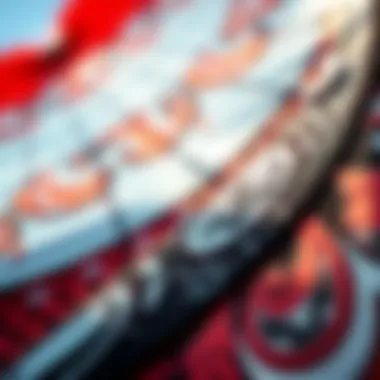
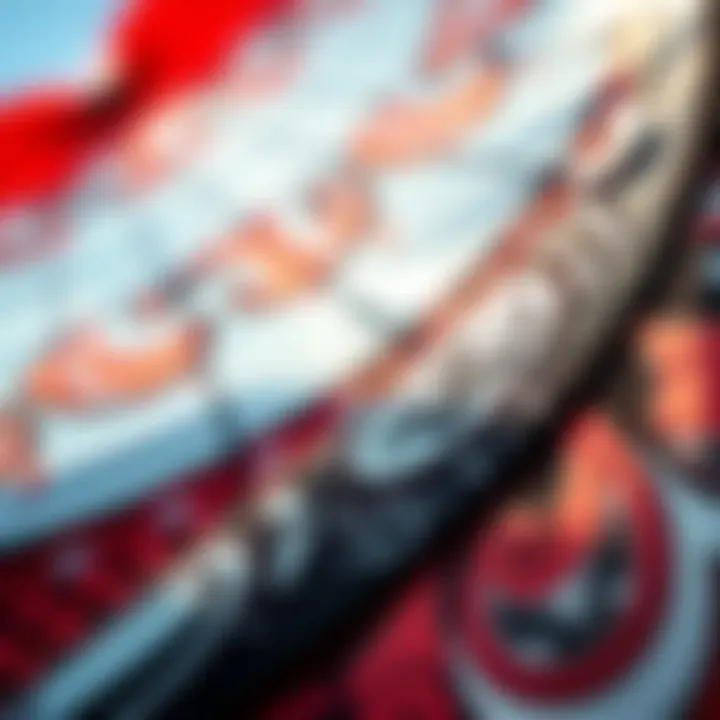
Definition and Scope
A custom kite refers to a kite designed and built according to the specific needs and preferences of the kiteboarder. Unlike mass-produced kites that cater to a broad audience, these kites undergo a detailed design process tailored to individual specifications. This could include unique dimensions, specific material selections, or personal artwork.
The scope of custom kites extends beyond mere aesthetics. These kites can be optimized for different wind conditions, designed for various skill levels, or tailored for certain riding styles. The beauty of a custom kite lies in its ability to respect the rider's unique inclinations and requirements—unlike cookie-cutter kites, custom kites speak directly to the rider’s heart.
The vastness of the custom kite market tells you something. We see manufacturers who specialize in crafting these one-of-a-kind creations, with diverse offerings that appeal to different kiteboarding niches. Whether you fancy going big in the air or deftly gliding across the water’s surface, your custom kite can help you achieve those dreams.
What Makes a Kite Custom?
Several elements contribute to what makes a kite truly custom. These aspects can greatly affect how a kite performs and how well it matches the rider's style.
- Personal Specifications: Riders can choose kite dimensions, including width and height.
- Material Selection: Depending on the environmental conditions, different fabrics and frameworks can be chosen to enhance durability or flexibility.
- Design Customization: Individuals can work with designers to develop a kite that reflects their personal style, including colors, logos, and themes that resonate with them.
- Functional Features: Customization might also include specific features tailored to performance needs, such as adjustability in the bridle or specific types of control systems.
In short, a custom kite is designed like a tailored suit—it fits your characteristics and skills precisely. That helps you to ride with more confidence and ultimately enjoy kiteboarding more. Whether you’re racing across the water or enjoying a leisurely day in the park, the understanding of what makes a kite custom will inform you in choosing the right equipment for your adventures.
As you navigate through this article, you’ll gain deeper insights into the benefits of custom kites and the process to design your own. With this knowledge, you’ll be better equipped to elevate your kiteboarding experience to new heights.
Benefits of Custom Kites
The appeal of custom kites goes far beyond their aesthetics. They offer enthusiasts a variety of distinct advantages that elevate the overall kiting experience. Understanding these benefits is crucial for kiteboarders and hobbyists alike, as it influences their decisions when selecting the right kite.
Enhanced Performance
One of the most compelling reasons to opt for custom kites is the enhanced performance they provide. Manufacturers can craft kites tailored to specific riding styles or conditions, optimizing them for various situations. For instance, a kite designed for high-wind conditions will have different characteristics than one created for light breezes. A rider who prefers a fast and aggressive style could benefit from a smaller, well-defined diamond shape, while someone seeking stability might favor larger, more rounded options.
This careful tailoring ensures better speed, agility, and control in the air, enhancing the thrill of kiteboarding.
Personal Expression
Custom kites serve as a canvas for personal expression. Kiteboarding is not only about performance; it’s also an art form where individuality shines. With custom designs, one can incorporate personal colors, graphics, or even logos that reflect their personality or brand. Imagine gliding across the water with a kite that not only performs beautifully but also showcases your unique style. This aspect of customization can foster a deeper connection between the kite and the rider, making the experience all the more fulfilling.
Tailored Experience for Different Conditions
Every kiteboarder is aware that wind conditions can vary remarkably from day to day and location to location. Custom kites allow for a tailored experience that can adjust to these differing conditions. For example, a kite designed for choppy waters can feature reinforced materials and improved stability, while one made for smooth, flat surfaces might prioritize speed and responsiveness.
Having a kite that meets these specific needs means that riders can push their limits further, feeling confident and secure regardless of the environment. This adaptability not only enhances performance but also encourages more time spent on the water, which translates to greater enjoyment and skill improvement.
"Choosing a custom kite is not just about selecting a tool; it's about defining the entire kiteboarding experience. It's a commitment to performance, artistry, and passion."
In summary, the benefits of custom kites extend well beyond simple personalization. They empower riders by optimizing performance, allowing for creative expression, and adapting to various riding conditions. As such, investing in a custom kite is a significant yet worthwhile decision for any serious kiteboarder.
The Process of Custom Kite Design
Designing a custom kite is more than just selecting colors and symbols; it’s about crafting an experience tailored to individual needs. The process itself encompasses various steps, each integral in ensuring that the final product caters perfectly to the rider's specification and style. Whether you’re an accomplished kiteboarder or a newbie eager to learn, understanding this process helps forge a deeper connection with your equipment.
Initial Consultation
The journey begins with an initial consultation, a crucial step that's like setting the framework for what’s to come. During this stage, it’s important to assess the desires and specifications of the kiter. The designer might ask questions about what specific traits are being sought. For example, are you looking for a kite that excels in low wind conditions or one that can perform in higher winds? Discussing these details helps in carving out the essentials right from the start.
Factors to discuss include:
- Riding style (freestyle, wave, racing)
- Experience level (beginner, intermediate, advanced)
- Desired dimensions and aspect ratios
- Wind conditions most frequently encountered
Selecting Materials
Material selection is pivotal, almost like picking the right ingredients when baking a cake. The material determines the weight, durability, and ultimately the performance of the kite. Common materials include ripstop nylon and polyester—both are fashionable choices, but they have distinct properties. Ripstop nylon is lightweight and resistant to tearing, while polyester often holds shape better.
In addition, various reinforcements such as Kevlar and Dacron could be introduced in areas that require extra strength. The kite’s lines, spars, and canopy are all subject to scrutiny during this selection phase. Each component should resonate with the desired performance benchmarks outlined in the prior consultation.
Design Options and Customization
Once materials have been picked, the fun part begins—design options and customization take center stage. This is where personal expression takes flight. Riders can choose from a palette of colors and choose patterns that reflect their personality or style. The design isn't just aesthetic; it can also have performance implications.
For instance, the shape of the kite might change based on patterns chosen to cut through the wind efficiently. The design team often utilizes software to show how different configurations impact performance. Custom logos, names, or unique graphics add an extra touch, personalizing the kite down to the last detail.
Importantly, any considerations about the kite’s shape and size must be concluded here as well; they have a dramatic effect on flying characteristics.
Final Thoughts
In essence, the process of custom kite design is an intricate dance between personal preference and performance-driven choices. The end product isn't merely a tool for kiteboarding; it is a unique blend of artistry and functionality that invites riders to truly own their experience on the water.
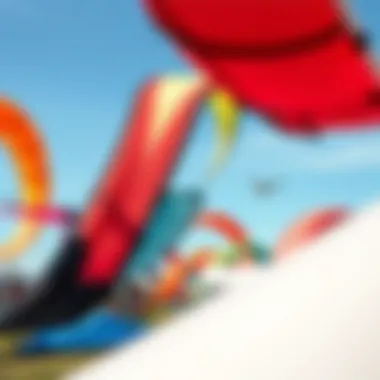
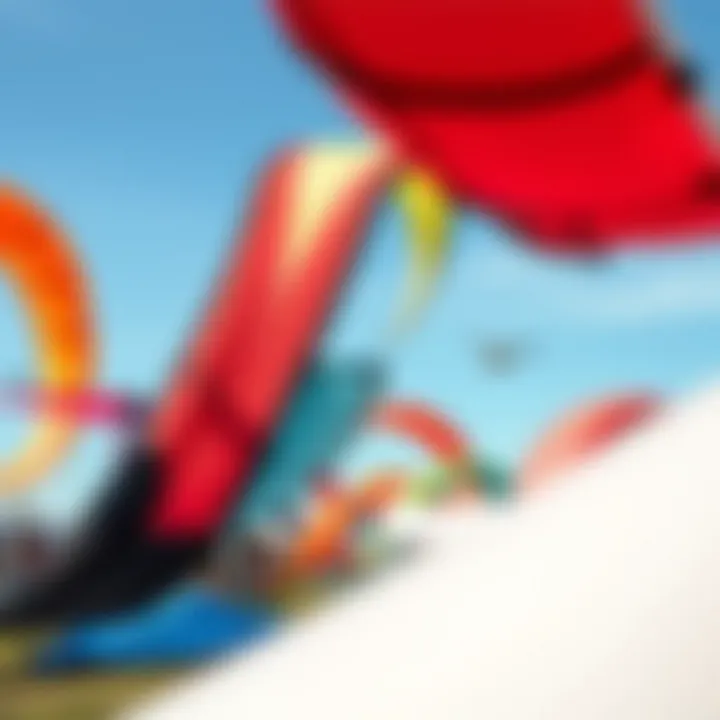
"The kite is not just a piece of fabric; it is an extension of the kiter himself, reflecting his desires, style, and ambitions in the air."
For more exhaustive insights, consider resources like Wikipedia, and forums like Reddit where enthusiasts gather to share their experiences and recommendations.
Factors Influencing Custom Kite Performance
When it comes to custom kites, understanding what boosts their performance is key for kiteboarders and enthusiasts. The kite's efficiency in the air drastically depends on several interlinked factors. These factors determine how well a kite responds to the rider's inputs and reacts to wind conditions. Getting them right means the difference between an exhilarating ride and a lackluster experience. Let's dive into three main elements that play a significant role: size and shape, material choices, and wind conditions alongside riding styles.
Size and Shape Considerations
The dimensions of a kite impact its agility and stability. Two aspects stand out when discussing size: the area of the kite and the aspect ratio.
- Area: A larger surface area provides more lift, benefiting riders in lower winds. However, a too-large kite can be unwieldy in stronger winds. Conversely, smaller kites yield faster turns and better response, suiting advanced riders or high wind conditions.
- Aspect Ratio: This refers to the relationship between a kite's width and length. A low aspect ratio kite is wider and shorter, offering better stability and lift for beginners. In contrast, high aspect ratio kites are longer and thinner. They are built for speed and advanced maneuvers, making them a favorite among experienced riders. Choosing the right size and shape also aligns with personal preferences, riding styles, and skill levels.
Material Choices
The materials utilized in custom kites are crucial for performance. Kite makers typically use a blend of fabrics and reinforcements. Key materials include:
- Ripstop Nylon: Known for its lightweight properties and resistance to tearing. It allows for greater control and enhances longevity.
- Dacron: This material is more durable and provides stiffness, which is vital for maintaining the kite's shape.
- Mylar: Often used in higher-end kites, Mylar is lightweight and stiff, lending stability to the airframe, which supports extreme performance in trick transitions.
Understanding how these materials work together can lead to kites that marry speed, durability, and control. Enthusiasts should engage with manufacturers to find the right balance tailored to the riding experience they seek. Each element will call for a different kind of riding, so it’s all about finding that sweet spot for how you want to fly.
Wind Conditions and Riding Styles
Wind conditions can vary wildly; hence, understanding your local environment is vital. Kites are not one-size-fits-all. A kite that works perfectly on a sunny beach in a light breeze may flop in gusty conditions. By recognizing these variations, you can choose a kite that complements your regular riding atmosphere.
Your riding style also plays into this equation. If you prefer leisure cruising with the wind at your back, a stable, larger kite is suitable. On the flip side, if you’re into tricks and acrobatics, lighter kites that can respond swiftly to inputs are essential. Kiteboarders must understand how the wind interacts with their gear; an ideal setup translates to a better overall experience.
"Choosing the right kite involves more than just aesthetics; it requires a deep understanding of performance factors that influence your ride."
Optimally, kite enthusiasts should consider their personal interests, skill levels, and local weather patterns when assessing these factors. A kite custom-designed under these pillars will ensure a rewarding kiteboarding experience for many seasons to come.
Costs Associated with Custom Kites
When diving into the world of custom kites, one of the more pressing considerations that kite enthusiasts face is the costs involved. Understanding the financial aspect is essential, as it informs decisions ranging from design preferences to the overall kiteboarding experience. Alterations in price can significantly impact what you ultimately select, and knowing what you might pay can save you from unexpected surprises.
Pricing Models Explained
Custom kites tend to come with a myriad of pricing models that can leave the uninitiated scratching their heads. Generally, prices are influenced by various factors, including material quality, size, and the intricacy of the design.
- Base Pricing: Most kite manufacturers have a standard rate for base models, which can serve as a starting point for customization. This model is a good option if you want a reliable kite without too many frills.
- Add-On Features: Features that enhance performance or aesthetics—like advanced ventilation systems or custom artwork—often come at an additional cost. Evaluating whether these features align with your riding style can help weigh their value.
- Tiered Pricing: Several brands, especially those with a significant reputation, may offer tiered pricing based on the extent of customization. For those who want everything under the sun, knowing which level you fall into can be quite beneficial.
- Specialty Models: Some kites are built specifically for unique conditions or riding. Specialty kites can have higher price tags but might provide better performance.
Understanding these pricing models can empower you to make better choices, ensuring that you pay for exactly what you need.
Comparative Analysis with Production Kites
The market offers a vast assortment of production kites available off the shelf, which begs the question: how does the cost of custom kites stack up? While production kites are often less expensive upfront, they can lack the personalized touch that custom kites provide.
- Initial Investment: Custom kites generally require a higher investment, but consider the long-term benefits. A well-designed custom kite can provide superior performance tailored to your specific style, potentially offering a better value over time.
- Durability: Production kites may use standard materials that, while adequate, don’t always withstand wear and tear as well as premium brands' custom options. This can lead to extra expenses for repairs or replacements in the future.
- Satisfaction Factor: With custom kites, the joy often lies in the unique experience and personal expression they offer. This isn’t just about flying the kite; it’s about wearing your creativity, which is tough to put a price tag on.
In sum, while the costs associated with custom kites may seem steep, the potential for tailored performance and enhanced satisfaction plays an essential role in the ultimate value of your investment.
Where to Find Custom Kites for Sale
Identifying where to find custom kites is like finding a needle in a haystack at times, especially when you know exactly what you want. With kiteboarding gaining popularity, more vendors are entering the fray, which can make the process feel overwhelming. Understanding where to look for these unique creations can save you time and perhaps a headache.
Finding custom kites isn’t just about picking a random vendor; it’s about steering towards places that provide quality as well as creativity. Here are some key avenues to explore:
Reputable Manufacturers
When it comes to custom kites, the first stop is often reputable manufacturers. These are the folks who live and breathe kites, often pushing the envelope to create models that are not just functional but also works of art.
- Established Brands: Companies like Naish and Slingshot have their reputations built over years, ensuring consistent quality and innovative designs. They often have dedicated sections for custom orders.
- Local Artisans: In many areas, you can find skilled artisans who craft kites by hand. These designs often reflect local culture and environment, giving your kite a unique story.
- Trade Shows: Attending kite festivals or trade shows not only allows you to see some jaw-dropping designs but also connects you with manufacturers directly. You can often talk to designers and get insights into what would work best for your needs.
When dealing with manufacturers, don’t hesitate to ask questions. The more you know about their materials and crafting process, the better your final product will be.
Online Marketplaces Specializing in Custom Orders
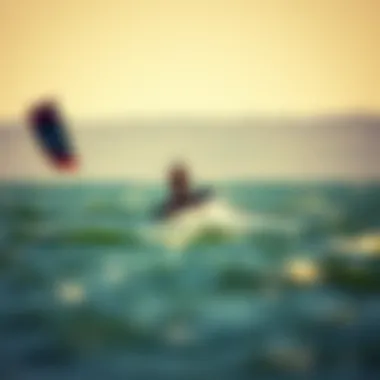
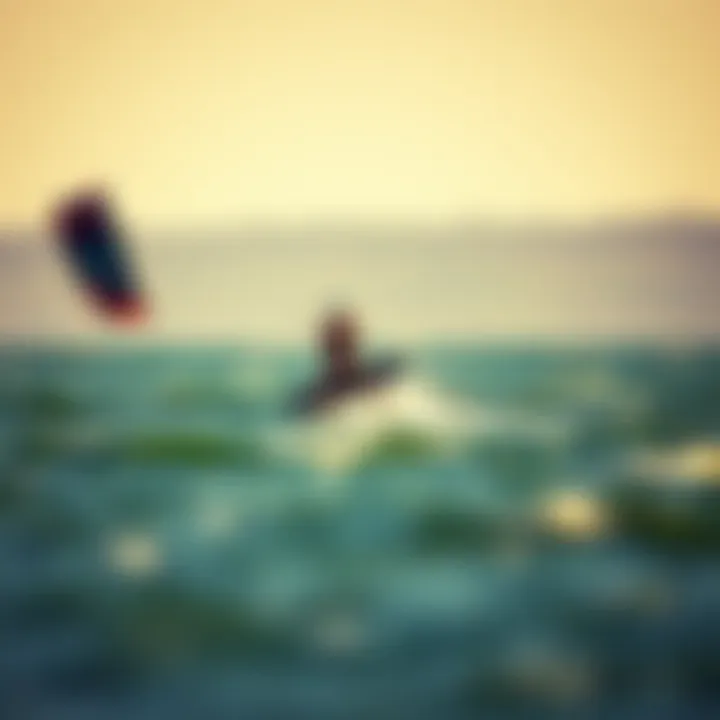
In today’s digital age, the Internet is a treasure trove for kite enthusiasts. Finding custom kites online means you can browse a wider selection than your local shops could offer. Here are some platforms worth your attention:
- Etsy: This platform is known for handmade items and often hosts skilled crafters who specialize in custom kites. You can communicate directly with creators, ensuring your design is tailored just for you.
- eBay: Sometimes you can score big on this site. Search for sellers who offer custom orders to find unique designs that might not be available anywhere else.
- Facebook Marketplace: Local buying and selling groups can be a goldmine. You might stumble upon individuals or small businesses offering custom kite services.
- Dedicated Kite Websites: Websites like RedBull Kiting or Kiteboarding.com often lead you to manufacturers offering custom designs. They may even have online tools to help you visualize your kite before you order it.
Online marketplaces present an opportunity to compare prices, designs, and shipping options easily. Always check reviews or ratings before making a purchase, as they can provide insights into the experiences of other customers.
Important: Custom orders might take longer than buying ready-made kites, so plan ahead, especially if you have a specific event in mind.
In essence, whether you opt for a reputable manufacturer or venture into online marketplaces, the key lies in doing your research. The more informed you are, the better your chances are of landing a kite that truly resonates with your spirit as an enthusiast.
Evaluating Custom Kite Vendors
Choosing the right vendor for custom kites can make or break the kiteboarding experience. When kites are uniquely crafted to meet an individual's wants or needs, it’s vital to select a vendor that not only offers quality but also resonates with the customer’s aspirations. Quality craftsmanship, after-sales support, and the experience of the vendor are all cornerstones to peek into before sliding into a purchase. Let's delve deeper into two critical aspects of this selection process: assessing reputation and reviews, as well as understanding warranty and support.
Assessing Reputation and Reviews
The reputation of a custom kite vendor can often be a telling sign of their reliability and the quality of their products. Going beyond glossy marketing materials, it's crucial to dig into what actual customers say about their experiences. Potential buyers should consider several avenues:
- Online Reviews: Websites like Reddit and specialized kite forums provide a wealth of opinions and experiences from fellow kiteboarders. Look for recurring themes in reviews—be it praise for durability or complaints about customer service.
- Social Media Feedback: Platforms like Facebook can reveal public interactions. High engagement on posts could indicate a responsive vendor.
- Word of Mouth: Don’t underestimate the power of a simple conversation. Fellow enthusiasts often have firsthand knowledge about good vendors to recommend or avoid, giving you invaluable insights.
Ultimately, assessing a vendor's reputation isn't just about the stars they receive; it’s about the stories behind those ratings. This research can serve as a guiding compass, steering you towards vendors committed to quality and customer satisfaction.
Understanding Warranty and Support
Once you've narrowed down potential vendors, it’s crucial to take a closer look at their warranty and support systems. Kites experience wear and tear, and understanding what kind of support you can expect after your purchase is vital. Here's what you should focus on:
- Warranty Duration: A robust warranty can provide peace of mind. Vendors that offer extended coverage typically stand behind their products.
- Repair Services: Inquire if the vendor provides repair options. Easy access to repairs can be a game-changer if a kite gets damaged while out on the water.
- Customer Support Availability: Immediate assistance can make all the difference. Check if they have either a dedicated support line or a responsive email system. Reading reviews focusing on post-purchase support can provide insights into how well they handle customer inquiries or issues.
"A quality vendor will not only sell you a kite. They will stand by you through your kiteboarding journey, ensuring you have all the help you need, from purchase to repairs."
Post-Purchase Considerations
Once you’ve navigated the vibrant world of custom kites and made your choice, an often-underestimated phase emerges—post-purchase considerations. Understanding how to care for and maintain your kite can greatly prolong its life and optimize its performance. Failure to pay attention to these details may lead to diminished experiences on the water, impacting your overall kiteboarding adventures.
Maintenance and Care for Custom Kites
The first step after acquiring your custom kite is establishing a robust maintenance routine. Custom kites, being unlike off-the-shelf products, often utilize specific materials and constructions that require special attention.
- Regular Inspection: Develop a habit of inspecting your kite each time before use. Check for wear and tear in the fabric, lines, and leading edges. Any tears or frays can become serious issues if overlooked.
- Cleaning: Saltwater, sand, and dirt can wear down materials over time. After a session, rinse your kite with fresh water and allow it to dry properly before folding and storing it. This simple act can prevent mold growth and preserve the integrity of your kite's fabric.
- Storage: Proper storage is just as crucial. Instead of piling your kite into a corner, ensure it's rolled neatly and stored in a dry, cool place. Sunlight can be detrimental in the long run, so try to keep it out of direct sunlight for extended periods. Using a breathable bag will also help.
- Repairs: Should you find minor damage, don’t wait too long to fix it. A repair kit specific to kites, generally including adhesive patches and sewing materials, can save your kite from serious damage and allow it to perform well again.
Keeping your kite in top condition not only extends its life but also ensures that your investment pays off long-term
Reselling and Value Retention
Thinking ahead, the ability to resell your custom kite later can be an essential aspect to consider when purchasing. While custom kites can be more expensive than standard models, their value doesn't depreciate in the same way, especially if well-maintained.
- Documentation: Ensure you have all the purchase documents, warranties, and design details handy. Buyers appreciate knowing about the history of the kite and its custom specifications.
- Condition and Modifications: A kite that looks clean and is in good repair will fetch a better price. Avoid drastic modifications that would make the kite less appealing to potential buyers. If alterations are necessary, keep them to a minimum and document them.
- Market Demand: Pay attention to trends in kiteboarding. Knowing what’s popular can aid in determining the right time to sell. Sometimes, waiting for a certain season or event can boost interest in your kite.
- Community Engagement: Utilizing social platforms, such as Reddit or Facebook groups dedicated to kiteboarding, can be a great way to gauge interest and even post your kite for sale. Engaging with the community establishes credibility and can increase the likelihood of a sale.
Future Trends in Custom Kiting
As the world of kiteboarding continues to evolve, staying tuned into future trends in custom kiting becomes essential. These trends reshape not only how enthusiasts select their gear but also influence the overall kiteboarding experience. As technology progresses, kiteboarders are seeking more personalized options that align with their individual preferences, riding styles, and local conditions. Engaging with these upcoming trends is not just a hobbyist's pursuit; rather, it's a smart way for kiteboarders to keep their experiences fresh and dynamic.
Innovations in Design and Technology
Innovations in design and technology are taking custom kiting to heights previously thought impossible. For instance, the introduction of lightweight fabric materials, such as ripstop nylon, allows for increased durability while maintaining performance. This change means riders can enjoy exceptionally stable flying experiences, alongside an easier packing process. Moreover, advancements in computer-aided design (CAD) tools enable manufacturers to create highly precise, custom shapes for kites, optimizing them for specific conditions like wave riding or freestyle tricks.
Such innovations don’t stop at materials. Smart kites are becoming a common trend, embedding sensors that collect data on wind speed, direction, and even altitude. Kiteboarders can analyze these metrics through companion apps, helping them adjust their techniques or prepare for challenges. This vital information can foster greater skill development, making the entire kiteboarding experience not only thrilling but also data-driven.
"Custom kites of the future are not just about aesthetics; they’re becoming instruments for performance and analytics."
Trends like these herald a new era in custom kiting. Interested kiteboarders should keep their eyes peeled for emerging designs that showcase innovative engineering. Masters of manufacturing are also exploring eco-friendly materials, reflecting a growing awareness of sustainability within the kiteboarding community. With this trend, enthusiasts can feel good knowing they're making a choice that's better for the planet while indulging in their favorite sport.
Riding Community Influence on Custom Trends
In the realm of custom kiting, the riding community wields substantial influence over emerging trends. As kiteboarders gather in forums, at competitions, or social media platforms, their insights and experiences shape market demands. Enthusiasts often share their experiences, preferences, and desires for particular features, which prompts manufacturers to adapt their offerings accordingly.
The community's feedback is pivotal when it comes to selecting design themes, such as contemporary graphics or sustainable materials. For instance, trends often begin with a few passionate riders who advocate for a new kite size or shape that did wonders during their sessions. When word spreads and enthusiasts advocate for these changes, producers take note. Tutorials, contests, or demonstrations of terrain-specific custom kites can quickly shift what’s hot in the community.
Moreover, social media hashtags, like #customkites and #kiteboardingcommunity, have made it easier for riders to find inspiration and share their ideas, thus accelerating the trend cycle. Events like kiteboarding festivals serve as showcases for new designs, allowing riders to experience the latest creations firsthand, often fueling the desire for customization.
In summary, the intersection of riding communities and custom kiting trends creates a compelling space for innovation. Understanding this dynamic helps kiteboarders surge forward in their journey, ensuring they not only stay relevant but also lead the way in pioneering new experiences.
For kiteboarders aiming to remain at the forefront, engaging with these trends will enhance not just their rides, but the culture surrounding kiteboarding itself.







